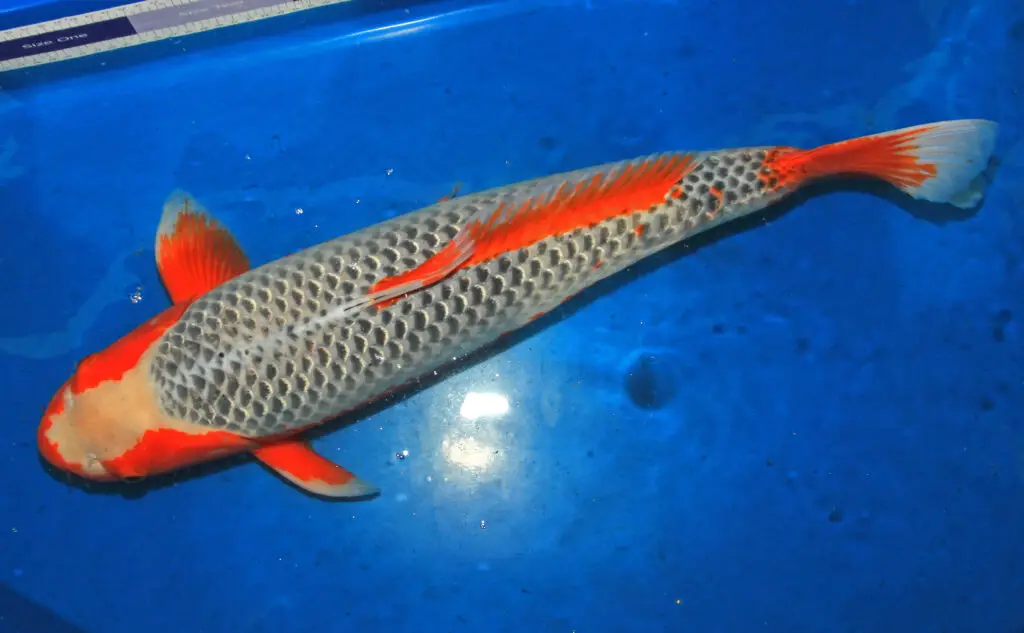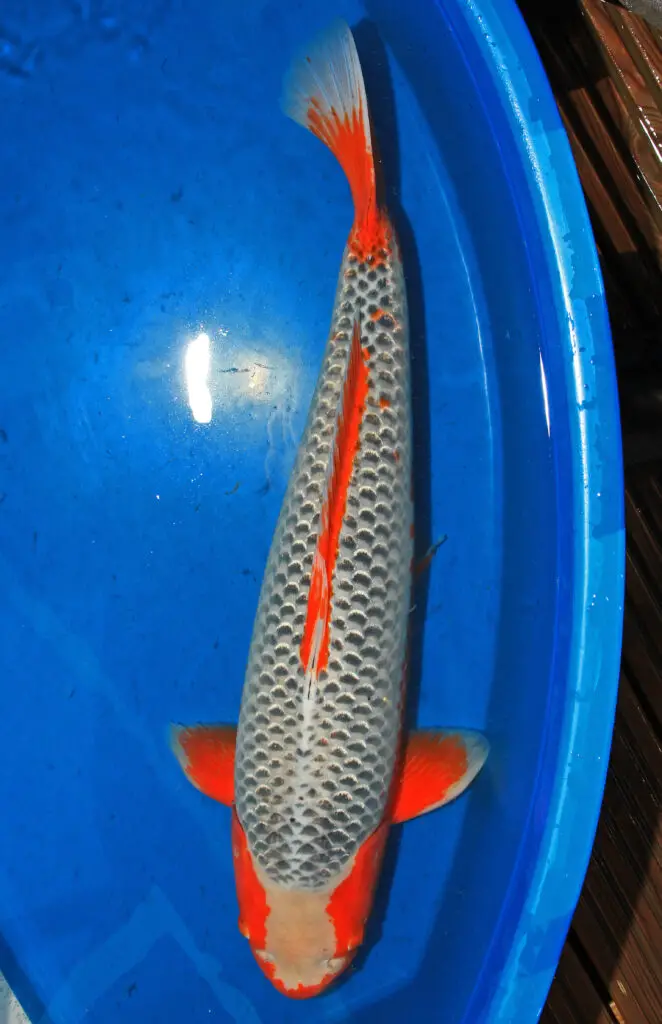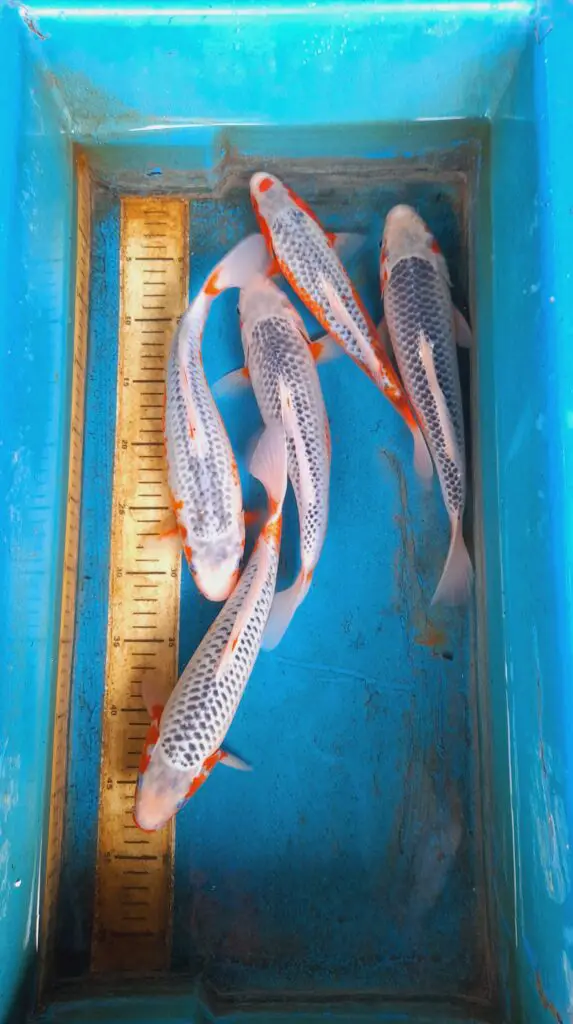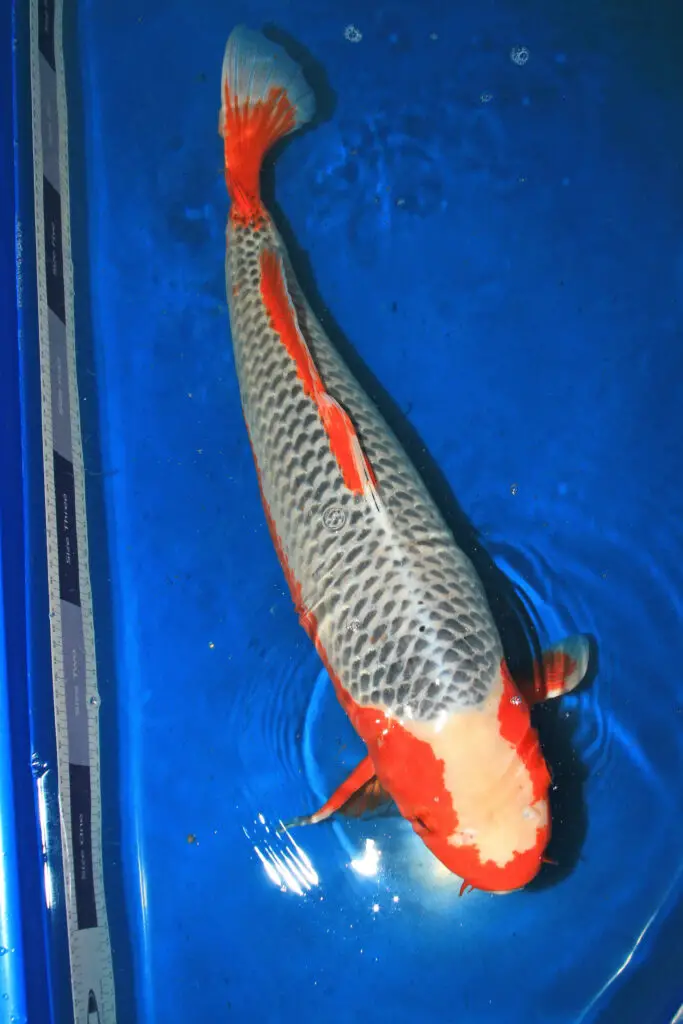
Descended from the common Carp, Koi have mutated over hundreds of years to become the desired ornamental art form which has developed into. With their unique, reticulated patterning of blue-grey scales, Asagi Koi is the earliest documented variation of koi.
The perfect Asagi Koi has no splotches and blemishes on the nose, a pure white head, red eyes, and a coloring pattern from just below the head, extending down to the tail. Colouring should be uniform, and colors shouldn’t overlap, while scales should have contrasting hues.
Choosing a top-rated Asagi Koi requires a deep knowledge of the Koi variations and a determined view of what you are looking for. We list some pointers in this article that will help you; however, you should choose the fish that appeals to you at the final count.
How Do You Judge The Quality Of Asagi Koi?

Very few Asagi Koi are born with no faults, so if you have a faultless fish, it has value.
If you are breeding fish and competing, the quality and color styles are essential, whereas if you keep them just as a pet, it is recommended that you choose them according to your taste.
If you are looking at stocking your Koi Pond with competition quality Koi, the following provides a rough guide to choosing the “perfect” Asagi Koi.
- A flawless Asagi koi begins with a perfectly white head. If the Asagi Koi’s head develops red pigmentation, it is considered a Menkaburi Asagi, a variation of the Asagi koi.
- The coloring pattern should begin below the head and extend to the tail.
- Even patterning and fewer deviations in color are more desirable.
- Red markings and splashes should have a degree of uniformity or pattern.
- Red or bright orange colors should not overlap with the blue in the scales.
- Most breeders desire red eyes.
- The tip of the Asagi Koi’s nose should be free of splotches and blemishes.
- Don’t worry if you can see the skull through the skin of an immature Koi because the koi will grow out of it.
- The most sought-after Asagi Koi will have a back covered in blue scales with a light blue tint that blends to a darker shade near the base of the scale.
- If there is a light and dark contrast on the scales, this is more desirable.
- If scales on a young Asagi Koi seem lackluster, don’t worry because they develop more intense hues as the koi grows.
- Lighter blue Asagi is preferred over a darker one and will be easier to sell later.
- Some collectors prefer a brighter orange fin, tail, and heads, while others like a darker reddish tint.
- There is no general standard relating to the colors of the pectoral fins, and your choice can be based on your taste.

There Are Eight Different Types Of Asagi Koi
There are two primary varieties of Asagi Koi: Konjo Asagi and Narumi Asagi. The remaining six varieties are sub-sets of Konjo Asagi and Narumi Asagi.
Konjo Asagi Koi
Konjo – means Dark blue.
Konjo Asagi is one of the two primary species of Asagi Koi, and they are distinguished by their deep blue, almost black scales.
Narumi Asagi Koi
Narumi Asagi – means medium blue colored Asagi – traditionally blue-dyed cotton cloth. Lighter than Konjo Asagi and darker than Mizu Asagi.
Narumi Asagi is the second primary species and has light to medium-blue scales.
Hi (Red-Orange Markings), Asagi Koi
Hi Asagi, are the first of the subspecies.
The word Hi is a general term that means red.
Hi Asagi, have more than an average amount of either red or orange. The red-orange color exists away from the head, fins, tail, and abdomen past the lateral line.
Some Hi Asagi is almost entirely red.
Gin Rin Asagi Koi
Gin Rin is a name that describes the coloration of the Asagi Koi.
- Rin – This is a word that means ‘scales.’
- Gin – means shiny, reflective, silver metallic.
The second subspecies are Gin Rin Asagi which have silvery-metallic colored scales. Their scales are closer to the Konjo Asagi coloration, with silver-white reticulation (net pattern).
Akebi Asagi Koi
Akebi Asagi is also referred to as Mizu Asagi or Mizu Asaki.
- Akebi – means light blue.
- Mizu – means Light blue color.
Akebi Asagi has the lightest blue color of any Asagi variety. Their scales are generally light blue or light grey blue.
Taki Asagi Koi
Taki – means waterfall.
Taki Asagi typically has a coloring closer to the Konjo colors but is differentiated by a white horizontal line running between the dark back and a generally red abdomen.
Asagi Sanke Koi
Sanke – means ‘White-based’ koi with red and black patterning.
Asagi Sanke has a combination of Hi (red-orange markings), Shiro (white), and Sumi (black) colors. The red-orange and black markings should overlay white or light blue/light grey scales.
Reticulation (the net pattern) will still be present.
Menkaburi Asagi Koi
Menkaburi – Means Hi (red) covering the entire face/head – from the mouth to the gills.
History Of Asagi Koi

Koi is a descendant of the common carp. It is generally accepted that carp were first transported to Korea and China over 2,000 years ago and were bred as a food source. There is evidence that they appeared in Japan approximately 1,000 years ago. Depending on the source of information, they were either kept in ponds or rice paddies as a food source supplementary to rice. Color mutations occurred because they were bred as part of a small gene pool. The fish with the mutated colors were not eaten and were set aside for breeding purposes.
In the 1800s, records show that farmers started to assign a value to the fish based on the ornamental color—the more striking the colors, the greater the value. It is thought that it was a red carp called “Hookazuki.” The first all-white koi was produced from the Hookazuki red carp. When red and white carp were bred together, it produced the first red and white koi.
A black mutation was produced by breeding two strains of wild carp: one brown/black and the other blue/black. Asagi Koi, meaning “light blue,” emerged from this early mutation and became the first true blue koi, the Asagi.
Conclusion
Asagi Koi is one of the earliest documented koi varieties sought after by connoisseur breeders. Before choosing your koi, decide the purpose of your school of fish, as this will determine how particular you are and the price you are prepared to pay for fish.
The ideal koi is very rare, and to the dedicated breeders who compete, this level of koi is critical; however, to most observers, they are all just beautiful fish.

